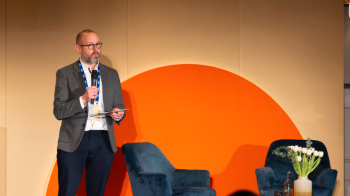If ad blocking is a villain, we need heroes to thwart it
George Hopkinson
The IAB's Senior Research and Project Manager, George Hopkinson, writes on the back of our latest ad blocking research.
You don’t have to look far in popular culture to see great examples of people with very different agendas coming together to achieve a common goal. Be it Marvel’s Avengers assembling to take down Loki or the various houses of Westeros rallying under one banner in Game of Thrones (no spoilers here!) And it is exactly this – coming together – that the digital industry needs to continue to do now…
Digital advertising is unique in many ways: it’s ability to reach people at almost any time and location; a near-infinite supply as people spend increasing amounts of time online; and in the fact that people can choose to opt-out of seeing it by installing ad blocking software on their devices. This, in particular, is what the industry needs to come together to try and change.
Ad blocking isn’t just bad news for advertisers, but for the general public, too. Because advertising funds so much of the online content and digital services that we use every day, the more ads that are blocked, the less money there is to fund content. When asked, overwhelmingly, 84% of UK adults prefer to access content for free and have ads present than to pay for content with no ads (1). Reducing people’s desire to block ads is crucial for building a sustainable future for digital advertising and for maintaining the free internet experience most of us want.
At the IAB UK, we’ve just released our latest ad blocking research. We worked with YouGov to ask the 24.6% of UK adults online who claim to currently be using an ad blocker, “Which, if any, of the following situations would make you less likely to use an ad blocker on your devices?”(2) The answers they gave fell neatly into three areas:
-
Give me formats that offer a better online ad experience by giving me less annoying ads, that take up less of the screen, with the option to skip or close them.
-
Make the ads I see better by making them more relevant to me and better looking.
-
Explain to me that digital ads fund the content I want to view online by asking me to switch off my ad blocker or refusing me access to content if I have an ad blocker installed.
The power to achieve points one and three is held mainly by the publishers that host ads and the power to achieve point two is mainly held by advertisers, ad creators and those that plan and serve digital advertising. Because this power is shared across the industry, it is crucial that all parties work together to create ad experiences that makes people less likely to want to use blockers. As with individual heroes, the whole group is stronger than the sum of its parts.
The good news is that some great collaborative work is already underway to help make improvements in each of these areas.
-
The Coalition for Better Ads (CBA), a global group of media agencies, tech companies, publishers and trade bodies, has measured people’s ad preferences and identified 12 ‘naughty ads’ they find the most annoying in order to help the industry move away from serving formats that people don’t like. The CBA is one of three initiatives that make up the IAB UK Gold Standard, designed to raise standards across the industry.
-
Advertisers increasingly understand the value of relevantly targeting people with high quality ads that are optimised for the device they are using. Fit for Purpose, a research project from the IAB UK, demonstrates that optimised ads outperformed non-optimised ads on several brand metrics, including brand consideration and trust1.
-
The IAB UK published DEAL, which outlines a framework for publishers to communicate with ad blockers visiting their sites. For example, a pop up notice saying “Using an ad blocker? Please consider whitelisting our site. Advertising makes it possible to produce the editorial you are about to read”. For more information see the IAB Ad Blocking Consumer Guide for Publishers here.
There’s more good news too. Consumer attitudes appear to be shifting. The IAB UK ad blocking report explored the main reason why people who downloaded ad blocking software were not currently using it and found that 29% have stopped because they either couldn’t access some content with the ad blocker installed (19%), felt bad about blocking ads on free sites (5%) or missed seeing some of the ads (5%).
So, whilst progress is being made to tackle the threat of ad blocking, the industry needs to keep front of mind that whilst Thor, Captain American and the Hulk were all good, when they worked together, the Avengers became great.
(And if you felt my Marvel link was a bit of a stretch then maybe this piece from an older IAB research piece will convince you!) Mobile Ads Unite.
Sources:
- IAB UK Fit for Purpose research, March 2018, UK Adults Online (1,200)
- IAB UK / YouGov Ad Blocking research, February 2018, UK Adults Online (2,059)
Related content
Ad-supported digital services are worth £14,600 a year to UK households
Learn moreDigital advertising’s share of market hits 75%
Learn moreDigital ad spend resilient in face of challenging 2022 as market grows 11% to £26.1bn
Learn more10 questions buyers of attention measurement should be asking - and why they’re important
Learn more
Fast forward to 2030 with Futurescape
An in-depth exploration of the attitudes, innovations and media shifts that will shape the years ahead and redefine how we advertise by the turn of the decade



